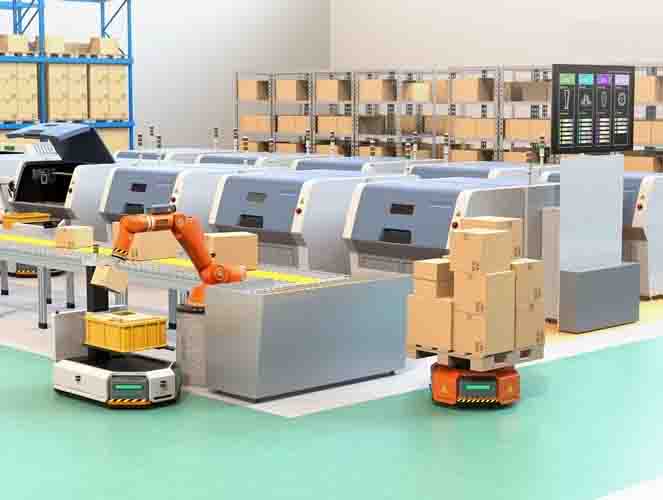(Commonwealth) _ In today’s fast-paced world of shipping and logistics, human-machine collaboration has become increasingly important for efficient and effective automated planning. The combination of human expertise and machine intelligence has revolutionized the way shipping and logistics companies operate, resulting in streamlined processes, improved decision-making, and increased productivity.
Automated planning is a critical function in shipping and logistics, involving tasks such as route optimization, scheduling, resource allocation, and cargo tracking. Traditionally, these tasks were performed manually, which was time-consuming and prone to errors. However, with the advent of advanced technologies such as artificial intelligence (AI) and machine learning (ML), automated planning has become more sophisticated and capable of handling complex logistics operations.
Human-machine collaboration in automated planning involves harnessing the strengths of both humans and machines. Humans bring their domain expertise, intuition, and creativity to the table, while machines provide data analysis, pattern recognition, and optimization capabilities. Together, they form a powerful partnership that can deliver superior results compared to either working alone.
One of the key areas where human-machine collaboration has had a significant impact is in route optimization. Shipping and logistics companies need to determine the most efficient routes for delivering goods to multiple destinations, taking into account factors such as distance, time, cost, and availability of resources. This requires analyzing large amounts of data, including real-time information on weather, traffic, and transportation options.
Machines can quickly process and analyze vast amounts of data, identifying patterns and trends that are not easily detectable by humans. They can also perform complex calculations and simulations to optimize routes based on various parameters, such as cost, time, and environmental impact. However, human input is crucial in refining the results and making decisions based on factors that may not be fully captured by the data, such as customer preferences, regulatory requirements, and operational constraints.
For example, a shipping company may use AI-powered software to generate optimized routes for delivering goods across different regions. The software takes into account various parameters, such as the availability of transportation modes, fuel costs, and delivery deadlines. Human operators can then review the proposed routes, consider additional factors such as customer preferences and local regulations, and make the final decisions on the routes to be followed. This collaborative approach ensures that the optimized routes are not only efficient in terms of time and cost but also aligned with the company’s strategic goals and customer requirements.
Another area where human-machine collaboration is valuable is in scheduling and resource allocation. Shipping and logistics companies need to efficiently allocate resources, such as vehicles, labor, and warehouses, to meet customer demands while optimizing costs. Machines can analyze data on factors such as demand patterns, resource availability, and operational constraints to generate optimal schedules and resource allocation plans. Humans can then review and modify these plans based on their expertise, taking into account factors such as customer priorities, operational contingencies, and human resources considerations.
In addition to route optimization and resource allocation, human-machine collaboration in automated planning also extends to cargo tracking and monitoring. Shipping and logistics companies need to track the movement of goods in real-time, monitor delivery milestones, and proactively manage exceptions, such as delays or disruptions. Machines can collect and analyze data from various sources, such as sensors, GPS, and transportation management systems, to provide real-time visibility and insights into the status of shipments.
Humans can then use this information to make informed decisions, such as rerouting shipments, reassigning resources, or notifying customers of delays. They can also use their expertise to interpret the data in the context of the broader logistics operations and customer requirements. For example, a human operator may decide to expedite the delivery of a high-priority shipment based on the real-time tracking data, even if it involves additional costs, to ensure customer satisfaction.








